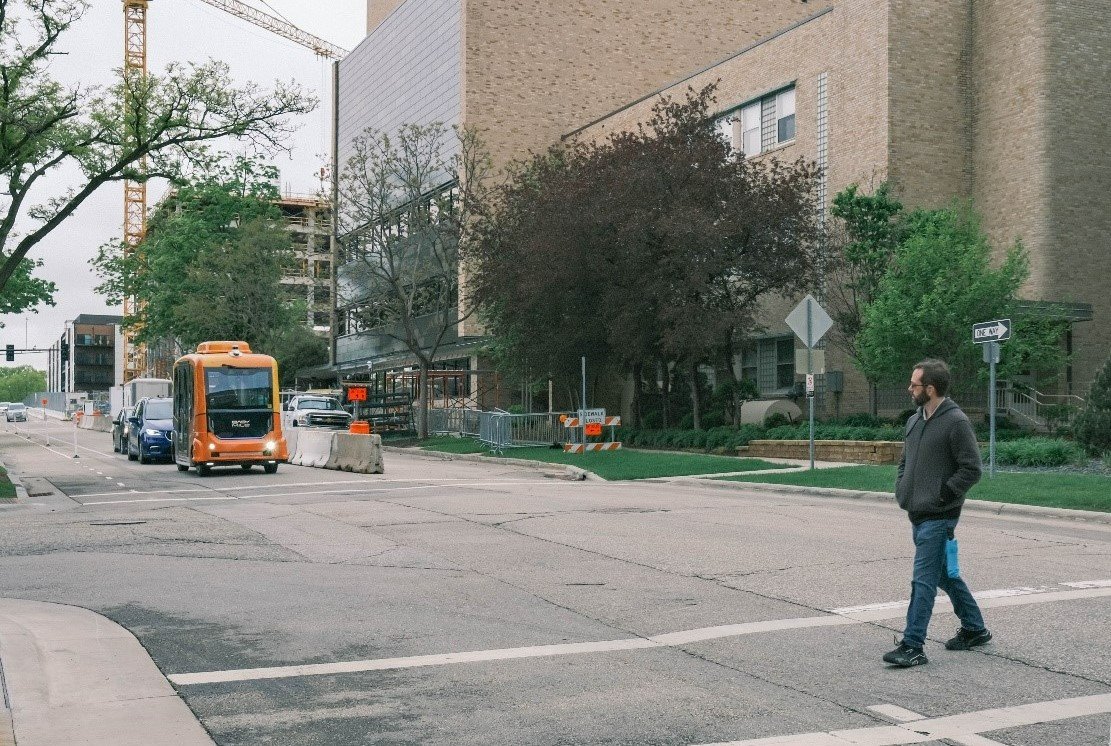Our laboratory has several means by which to measure safety outcomes and risks to drivers and from drivers. These involve field observations that are either conducted in person or by the commission of traffic camera video capture and analysis.
Driver Behavior Measurement
Our lab team members have significant experience in capturing driver behavior by visiting sites of relevance to the driver safety or pedestrian safety research question, or by reviewing traffic camera video. During site visits or video reviews, our team uses data coding protocols to consistently and reliably capture and measure driver behaviors. Furthermore, when the research focus is on pedestrian safety, the laboratory can employ a staged crossing method to safely generate driver-pedestrian conflicts and measure the outcomes of these conflicts.
In-Person Assessment and Staged Crossings
The HFSL has significant experience capturing behavioral data with in person observations, including interactions between automated vehicles and human-driven vehicles, drivers and pedestrians, and pedestrian behavior. Besides observation of vehicle behavior, we have conducted multiple studies where our team members perform street crossings at sidewalks, or "staged crossings", in order to examine how drivers react to the presence of a pedestrian. We have employed this method to examine general stopping propensity, pedestrian safety, and safety effects of local roadway infrastructure.
Traffic Camera Recording and Analysis
Our team has performed multiple studies capturing and reviewing video camera data, both in the healthcare domain and in transportation. We have access to mobile cameras and have used the services of data collection vendors in the Twin Cities metropolitan area to capture large sample camera data across both Saint Paul and Minneapolis intersections to examine infrastructure effects on driver behavior. The HFSL is practiced at reviewing, coding, and analyzing data extracted from these videos to provide actionable conclusions about traffic safety based on large sample observations from natural driving conditions.


